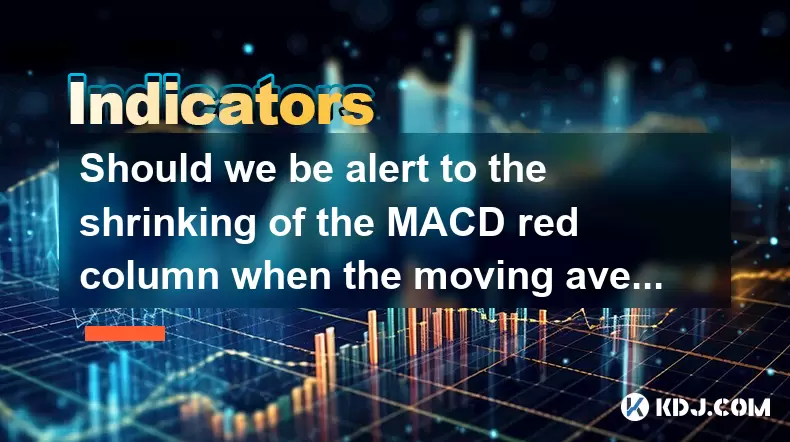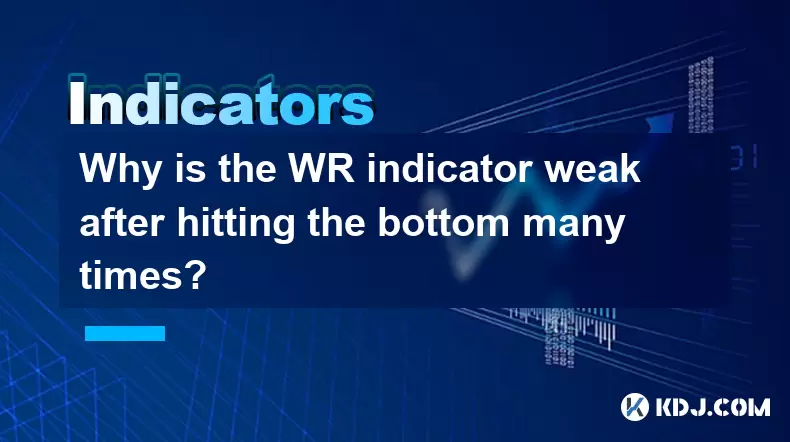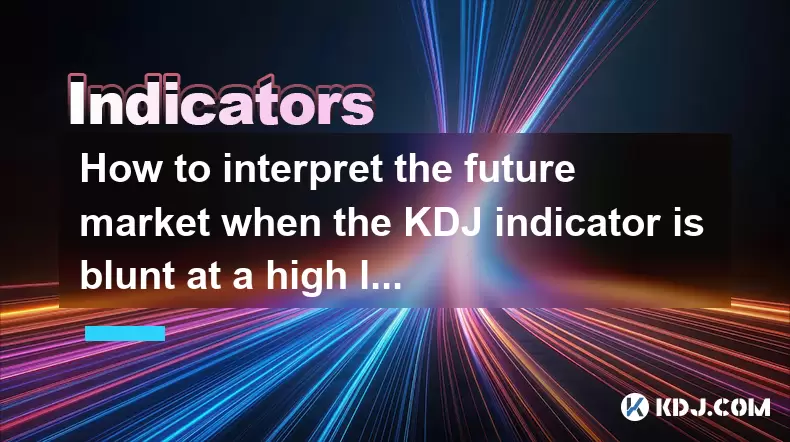-
 Bitcoin
Bitcoin $101,898.5005
-0.75% -
 Ethereum
Ethereum $2,258.1125
-1.07% -
 Tether USDt
Tether USDt $1.0004
0.01% -
 XRP
XRP $2.0178
-2.93% -
 BNB
BNB $624.0243
-1.53% -
 Solana
Solana $134.3298
-0.90% -
 USDC
USDC $0.9999
0.01% -
 TRON
TRON $0.2675
-2.05% -
 Dogecoin
Dogecoin $0.1538
-1.96% -
 Cardano
Cardano $0.5482
-1.11% -
 Hyperliquid
Hyperliquid $35.5636
5.45% -
 Bitcoin Cash
Bitcoin Cash $453.4902
-1.66% -
 Sui
Sui $2.5134
-2.97% -
 UNUS SED LEO
UNUS SED LEO $9.1292
1.77% -
 Chainlink
Chainlink $11.8457
-1.60% -
 Stellar
Stellar $0.2312
-2.73% -
 Avalanche
Avalanche $16.9721
0.29% -
 Toncoin
Toncoin $2.7549
-3.82% -
 Shiba Inu
Shiba Inu $0.0...01081
-1.10% -
 Litecoin
Litecoin $80.8250
-0.71% -
 Hedera
Hedera $0.1374
0.21% -
 Monero
Monero $305.4827
-2.36% -
 Ethena USDe
Ethena USDe $1.0006
0.00% -
 Dai
Dai $1.0000
-0.01% -
 Polkadot
Polkadot $3.2085
-3.12% -
 Bitget Token
Bitget Token $4.0845
-3.13% -
 Uniswap
Uniswap $6.3353
-1.63% -
 Pi
Pi $0.5085
-0.70% -
 Pepe
Pepe $0.0...08913
-3.82% -
 Aave
Aave $232.7090
-0.58%
What does it mean when VWAP suddenly goes sideways? Is it a signal of a change in the market?
When VWAP goes sideways in crypto trading, it signals market indecision and potential breakouts, guiding traders' strategies.
May 23, 2025 at 04:15 pm

When the Volume Weighted Average Price (VWAP) suddenly goes sideways, it can be a significant indicator for traders within the cryptocurrency market. VWAP is a trading benchmark used especially by institutional investors to gauge the average price a security has traded at throughout the day, based on both volume and price. It is important because it provides traders with insight into both the trend and the value of a cryptocurrency at any given time. When the VWAP line, which typically moves in a certain direction, suddenly flattens out or goes sideways, it signals a potential shift in market dynamics that traders need to understand and react to appropriately.
Understanding VWAP in Cryptocurrency Trading
VWAP is calculated by adding up the dollars traded for every transaction (price multiplied by the number of shares traded) and then dividing by the total shares traded for the day. In the context of cryptocurrencies, this translates to the total value of the cryptocurrency traded divided by the total volume of the cryptocurrency traded. The formula looks like this:
[ \text{VWAP} = \frac{\sum (P_i \times V_i)}{\sum V_i} ]
Where ( P_i ) is the price of the trade and ( V_i ) is the volume of the trade for each transaction.
What Does a Sideways VWAP Indicate?
When the VWAP line goes sideways, it suggests that the price is consolidating around a certain level. This can happen for several reasons, and understanding these can help traders make informed decisions. A sideways VWAP can indicate that:
- Market Indecision: There is a balance between buyers and sellers, leading to a lack of clear direction in the market.
- Potential Breakout or Breakdown: A period of consolidation often precedes a significant move in either direction. Traders watch for a breakout above or below the VWAP line as a signal of the next trend.
- Volume Changes: If the volume decreases while the VWAP goes sideways, it might suggest that fewer traders are actively participating in the market, leading to less volatility.
How to Interpret a Sideways VWAP
Interpreting a sideways VWAP requires a nuanced approach. Traders should consider the following steps to better understand what this movement means for their trading strategy:
- Analyze the Timeframe: The significance of a sideways VWAP can vary depending on the timeframe. On shorter timeframes, it might indicate a brief pause, while on longer timeframes, it could suggest a more significant shift in market sentiment.
- Check Other Indicators: Combining the VWAP with other technical indicators like the Relative Strength Index (RSI) or Moving Averages can provide a more comprehensive view of the market.
- Monitor Volume: A sudden decrease or increase in trading volume can provide additional clues about the strength of the current price movement.
Trading Strategies When VWAP Goes Sideways
When the VWAP goes sideways, traders might consider the following strategies:
- Range Trading: Since the price is consolidating, traders can buy near the lower end of the range and sell near the upper end, profiting from the small price fluctuations.
- Breakout Trading: Positioning for a potential breakout or breakdown from the current range. Traders can set buy orders above the current VWAP and sell orders below it, anticipating a significant move.
- Waiting for Confirmation: Some traders prefer to wait for the price to break out of the sideways range before entering a trade, ensuring they are not caught in a false breakout.
Case Study: Bitcoin and Sideways VWAP
Let's look at a real-world example involving Bitcoin. Suppose the VWAP for Bitcoin on a daily chart goes sideways after a prolonged uptrend. This could indicate that the market is taking a breather and that the next significant move could be imminent. Traders might:
- Observe the Volume: If the volume remains high, it suggests that the sideways movement is a pause rather than a reversal. If the volume drops significantly, it could mean that the market is losing interest, and a reversal might be more likely.
- Look for Divergence: If other indicators like the RSI show divergence (e.g., the price is flat, but the RSI is trending up or down), it could signal an impending breakout.
- Set Alerts: Traders can set price alerts just above and below the current VWAP range to be notified of potential breakouts, allowing them to act quickly.
Technical Analysis Tools to Complement VWAP
To enhance the effectiveness of using VWAP, traders often use other technical analysis tools. Some of the most common tools include:
- Moving Averages: Simple Moving Averages (SMA) and Exponential Moving Averages (EMA) can help identify trends and potential reversals.
- Bollinger Bands: These can provide insights into volatility and potential price breakouts.
- MACD (Moving Average Convergence Divergence): This can help confirm trend direction and momentum.
Using these tools in conjunction with VWAP can provide a more robust analysis of the market conditions and help traders make more informed decisions.
Practical Steps for Trading with Sideways VWAP
When trading in a market where the VWAP has gone sideways, consider the following practical steps:
- Identify the Range: Use charting tools to clearly identify the upper and lower bounds of the current price range.
- Set Entry and Exit Points: Based on the identified range, set entry points near the lower bound and exit points near the upper bound for range trading.
- Use Stop-Loss Orders: To manage risk, set stop-loss orders just outside the identified range to limit potential losses if the price breaks out unexpectedly.
- Monitor for Breakouts: Keep an eye on the price action and volume to anticipate any potential breakouts. Use alerts to stay informed without needing to watch the market constantly.
FAQs
Q: Can a sideways VWAP be a false signal?
A: Yes, a sideways VWAP can sometimes be a false signal. It might appear as if the market is consolidating, but the price could revert to its previous trend without a significant breakout. Traders should use additional indicators and analysis to confirm any signals derived from VWAP.
Q: How long does a sideways VWAP typically last?
A: The duration of a sideways VWAP can vary widely depending on the specific market conditions and the cryptocurrency in question. It could last from a few hours to several days or even weeks. Traders should monitor the market closely and be prepared to adapt their strategies accordingly.
Q: Is it better to trade during a sideways VWAP or wait for a clear trend?
A: This depends on the trader's strategy and risk tolerance. Some traders prefer to capitalize on the smaller price movements within a sideways range, while others might wait for a clear breakout to trade in the direction of the new trend. Both approaches can be profitable if executed correctly.
Q: Can VWAP be used effectively on all cryptocurrencies?
A: While VWAP can be applied to any cryptocurrency, its effectiveness can vary depending on the liquidity and trading volume of the specific cryptocurrency. For less liquid cryptocurrencies, the VWAP might be less reliable due to larger price gaps between trades.
Disclaimer:info@kdj.com
The information provided is not trading advice. kdj.com does not assume any responsibility for any investments made based on the information provided in this article. Cryptocurrencies are highly volatile and it is highly recommended that you invest with caution after thorough research!
If you believe that the content used on this website infringes your copyright, please contact us immediately (info@kdj.com) and we will delete it promptly.
- DOGE Recovery Amid US-Iran Tensions: A Market Rollercoaster
- 2025-06-23 20:45:13
- Fiserv, PayPal, and Stablecoins: A New Era of Interoperability?
- 2025-06-23 20:45:13
- Hacken Token's Wild Ride: Minting Exploit and the Cryptocurrency Crash
- 2025-06-23 21:05:12
- Dogecoin, Cloud Mining, and Blockchain: A Meme's Evolution
- 2025-06-23 21:25:12
- Layer 1 Turmoil: CEO Ousted Amidst Scam Allegations
- 2025-06-23 21:05:12
- Solana's Stumble: Price Crash and Network Exodus?
- 2025-06-23 21:25:12
Related knowledge

What is the significance of the gap formed by the gap opening not being filled within five days?
Jun 23,2025 at 09:42pm
Understanding Gaps in Cryptocurrency TradingIn the world of cryptocurrency trading, a gap refers to a situation where the price of an asset jumps from one level to another without any trading activity occurring between those two levels. This often happens over weekends or holidays when the market is closed, and significant news or events occur that impa...

Does the second golden cross of MACD above the zero axis represent the continuation of strength?
Jun 23,2025 at 08:21pm
Understanding the MACD IndicatorThe Moving Average Convergence Divergence (MACD) is a widely used technical analysis tool in cryptocurrency trading. It consists of three main components: the MACD line, the signal line, and the histogram. The MACD line is calculated by subtracting the 26-period Exponential Moving Average (EMA) from the 12-period EMA. The...

Is it effective when the DIF line suddenly crosses the zero axis when the volume is shrinking and the market is trading sideways?
Jun 23,2025 at 07:29pm
Understanding the DIF Line in Technical AnalysisThe DIF line, or the Difference Line, is a critical component of the MACD (Moving Average Convergence Divergence) indicator, widely used in technical analysis across cryptocurrency and traditional financial markets. It represents the difference between the 12-period EMA (Exponential Moving Average) and the...

Should we be alert to the shrinking of the MACD red column when the moving average is arranged in a bullish pattern?
Jun 23,2025 at 08:14pm
Understanding the MACD Red Column and Its SignificanceThe Moving Average Convergence Divergence (MACD) is a widely used technical indicator in cryptocurrency trading. It consists of three main components: the MACD line, the signal line, and the MACD histogram (the red column). The red column represents the difference between the MACD line and the signal...

Why is the WR indicator weak after hitting the bottom many times?
Jun 23,2025 at 07:56pm
Understanding the WR Indicator in Cryptocurrency TradingThe Williams %R (WR) indicator is a momentum oscillator used by traders to identify overbought and oversold levels in the market. It ranges from 0 to -100, with readings above -20 considered overbought and below -80 considered oversold. In the context of cryptocurrency trading, where volatility is ...

How to interpret the future market when the KDJ indicator is blunt at a high level for a long time?
Jun 23,2025 at 10:35pm
Understanding the KDJ Indicator in Cryptocurrency TradingThe KDJ indicator, also known as the stochastic oscillator, is a momentum-based technical analysis tool used to identify overbought and oversold conditions in financial markets. It consists of three lines: the %K line (fast stochastic), the %D line (slow stochastic), and the J line (divergence). I...

What is the significance of the gap formed by the gap opening not being filled within five days?
Jun 23,2025 at 09:42pm
Understanding Gaps in Cryptocurrency TradingIn the world of cryptocurrency trading, a gap refers to a situation where the price of an asset jumps from one level to another without any trading activity occurring between those two levels. This often happens over weekends or holidays when the market is closed, and significant news or events occur that impa...

Does the second golden cross of MACD above the zero axis represent the continuation of strength?
Jun 23,2025 at 08:21pm
Understanding the MACD IndicatorThe Moving Average Convergence Divergence (MACD) is a widely used technical analysis tool in cryptocurrency trading. It consists of three main components: the MACD line, the signal line, and the histogram. The MACD line is calculated by subtracting the 26-period Exponential Moving Average (EMA) from the 12-period EMA. The...

Is it effective when the DIF line suddenly crosses the zero axis when the volume is shrinking and the market is trading sideways?
Jun 23,2025 at 07:29pm
Understanding the DIF Line in Technical AnalysisThe DIF line, or the Difference Line, is a critical component of the MACD (Moving Average Convergence Divergence) indicator, widely used in technical analysis across cryptocurrency and traditional financial markets. It represents the difference between the 12-period EMA (Exponential Moving Average) and the...

Should we be alert to the shrinking of the MACD red column when the moving average is arranged in a bullish pattern?
Jun 23,2025 at 08:14pm
Understanding the MACD Red Column and Its SignificanceThe Moving Average Convergence Divergence (MACD) is a widely used technical indicator in cryptocurrency trading. It consists of three main components: the MACD line, the signal line, and the MACD histogram (the red column). The red column represents the difference between the MACD line and the signal...

Why is the WR indicator weak after hitting the bottom many times?
Jun 23,2025 at 07:56pm
Understanding the WR Indicator in Cryptocurrency TradingThe Williams %R (WR) indicator is a momentum oscillator used by traders to identify overbought and oversold levels in the market. It ranges from 0 to -100, with readings above -20 considered overbought and below -80 considered oversold. In the context of cryptocurrency trading, where volatility is ...

How to interpret the future market when the KDJ indicator is blunt at a high level for a long time?
Jun 23,2025 at 10:35pm
Understanding the KDJ Indicator in Cryptocurrency TradingThe KDJ indicator, also known as the stochastic oscillator, is a momentum-based technical analysis tool used to identify overbought and oversold conditions in financial markets. It consists of three lines: the %K line (fast stochastic), the %D line (slow stochastic), and the J line (divergence). I...
See all articles
























































































